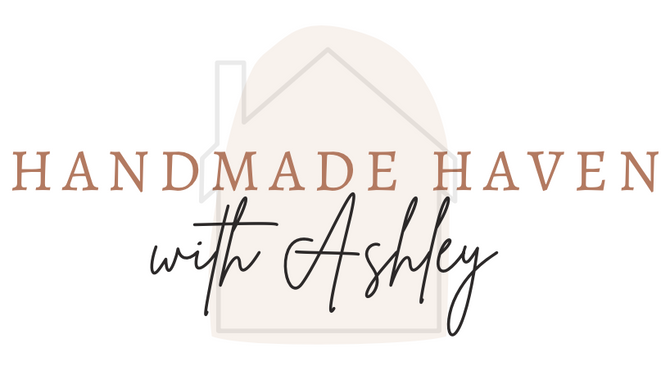What's a backyard these days without a floating deck?
I am super excited to announce that I am partnering with Home Depot to turn my backyard from drab to fab and the best part is they are providing me with $3,000 to do it! Yes you read that right. You may ask how I swung that; well read on to find out!
This post is sponsored by the Home Depot. There are some affiliate links in this post, meaning I get a small commission if you purchase through these links, at no cost to you. Click Here to read my full disclosure.
Orange Tank Pitch Session
This year, I attended the Haven Conference in Atlanta and one of the coolest things that happened at Haven was being able to participate in the Home Depot Orange Tank Pitch Session. Before Haven, Home Depot created an opportunity for attendees to submit a project for them to sponsor. There were three budget tiers: $1,000, $3,000 and $6,000. I entered my project for a backyard makeover for $3,000.
I was presently surprised when I was notified by email that I was chosen as one of the 12 finalist to present at Haven. I was super excited. The pitch session was an awesome experience. We had 2 minutes to pitch our project and 2 minutes to answer questions.
Here is the mock up of what I pitched, a floating deck; which is phase 1 of my backyard makeover. Massive deck! a whopping 16.5'x21'!

Hoestly, after the pitch session I didn’t think I was going to get picked. There was an attendee who pitched a service project to help an older lady in need and I thought for sure she probably deserved it ha!
But to my surprise at the closing ceremony, they called my name as the one chosen for the $3,000 budget tier! I was super excited! I even have a photo that captured my excitement! HA along with my new blog friends! (Lauryn Moon and Cammie Malaga)

and now the project is well underway! I am doing my best to document the process so you too can tackle a project like this. I must say it has been A LOT of work! but if one ole gal can make it happen I'm sure you can too.
Let's check out the space!
This looks so sad and boring; I know! I can't wait to get this deck complete. This is the space where the floating deck will go and I also plan on re-doing my covered patio space. I haven't quite got it all planned out because I'm waiting to see how the deck will turn out. But that part will be Phase 2 of my project. Goodbye Pallet Sectional! Your time has come
Now let's get to it!
First I would like to say, I am by no means a deck expert but I did my best to follow decking guidelines.
Step 1: Check Local Codes and Permits
This step is super important and its a step that I'm sure most people don't think of. Before I started my project I called the City of Norman to make sure I didn't need any required permits. Luckily, I didn't need any. The only thing they suggested was to watch out for water drainage lines, which is another thing I hadn't thought of. Every city is different, so make sure you check before building.
Step 2 : Purchase Materials
This is the step I didn't do all at once, I bought materials as I went a long and this was THE worst mistake!! I would need something and didn't have it and then would have to stop or wait to get it. Take it from me. Plan out everything you need and purchase it all at once.
Materials (Part 1)
- Paver Base/Stone Dust
- Deck Blocks
- 4x4 Pressure Treated Lumber
- 2x8 Pressure Treated Lumber
- Joist Hangers
- Landscape Fabric
- Lanscape Fabric Staples
- 3" Screws
- Strong Tie connectors
- Simpson Strong Tie 1 1/2" nails
- Simpson Strong Tie 3" Nails
Tools Needed (-->Tool Guide for Building a Deck)
- Drill
- Miter Saw
- Tape Measure
- Palm Nailer
- Hammer
- Air Compressor
- Level
- Gloves
- Safety Glasses
- Hearing Protection
- Respirator Mask
- Shovel
Step 3: Lay Deck Blocks
This step was probably the most labor intensive. It is super important to make sure everything is level to ensure you get the best results for your deck.
Dig Holes
I used a good ole shovel to dig out these holes and I must say I don't want to see another shovel for a looooong time. Oklahoma clay is very hard to work with, so before digging I wet the ground a bit to help with the digging. It made it a little messy but definitely helped ease the labor of getting that clay out.
My backyard is on a slope so some of my holes needed to be dug further down then others. Based on how low you want your deck to be, you may want to dig a little ways down to account for the paver Base/Stone Dust.
Add Paver Base and Lay Down Deck Blocks
I added 6" of paver base to the bottom of the hole and then watered it just a little and tamped it down. I tried to make the paver base as level as I could before putting down the deck block to make it easier when leveling.
I used about 2 bags of paver base per hole for under the deck block and filling the hole after the deck block was level.
Once the paver base was somewhat level I laid down the deck block and put a level on it. I added paver base as needed underneath to make sure it was level. I stepped on it a couple of times to make sure it was secure and then leveled it one last time to make sure it was exact. you want to be meticulous with this step. The more level the better in the long run.
The deck blocks were 5' apart. Once the first deck block was all level I used that as a reference for the surrounding deck blocks. I leveled them and then used a longer level to make sure they were aligned with the other blocks.
Step 4: Lay Beams
Once the deck blocks were in place, I laid the wood beams, line by line. I ended up with 5 lines in total.
I first put the 4x4 posts in the deck blocks....no particular length, just long enough to surpass the 2x8. Then I laid a 2x8 board on the deck block right up against the 4x4 posts.
Note: This process I used was what worked best for me being that this was a solo project.
Leveling the Beams
For the first beam, I placed a level on it to check if it was leveled and then made marking on the 4x4 posts where they should be cut and cut them down and screwed downt eh first beam,
When putting down the second beam, in order to check to see if the beams where level, I place a spare board across the two beams and used scrap pieces of wood to make sure it was level. I placed this spare board at the back, middle and front to make sure each section was level. Once it was level on the x-axis, I placed the level on the beam.

Then I used 5 structural screws and washers on each post to lock it down into place.
NOTE: I made the mistake of not putting the 5th beam on the outside of the 4x4 post.
Step 5: Lay Landscape Fabric
I read a couple of tutorials just to see what kind of materiel they used for the grass underneath and I saw on many post that they used Landscape Fabric.
I was thinking surely there must only be one type of fabric because I never found any links to anything but when I went to Home Depot there were like 6 different kinds and I stood there for like 20 minutes trying to figure out which one to get...so luckily for you I'm providing the link to the exact one I used! This Landscape Fabric was super easy to work with and seemed really durable.

I began laying the fabric line by line. In order to get the fabric underneath the wood by the deck blocks I just used a utility knife to cut slits in between. The material is easy to cut so any kind of blade/knife will work fine. I laid down the fabric little by little and then held it in place with some landscape Fabric Staples. These things are a must or else your fabric will go flying.
Once the landscape Fabric was secure down with the staples I poured a bag of paver base over it for extra hold.
Step 6 : Installing Joist Hangers
This process took a while but it was pretty straight forward. Measure, Cut and Joist away! The joists were placed 16" apart from each other. I used Simpson Strong Tie connectors to attach to the vertical beams and used 1 1/2" nails to drive into the vertical beams and 3" Nails to drive into the connectors diagonally into the joist.
 When installing my joist hangers this Ridgid Palm Nailer definitely made the joist process a whole lot easier. It does require an air compressor, I used my Ryobi's Pancake Air Compressor.
When installing my joist hangers this Ridgid Palm Nailer definitely made the joist process a whole lot easier. It does require an air compressor, I used my Ryobi's Pancake Air Compressor.
 It has a magnetic guide for precise fastener placement and is compact and low in weight. It is compatible with common nails 1-1/2 in to 3-1/2in. See the video below to see how I put this tool to work on my floating deck.
It has a magnetic guide for precise fastener placement and is compact and low in weight. It is compatible with common nails 1-1/2 in to 3-1/2in. See the video below to see how I put this tool to work on my floating deck.
 The Ridgid Palm Nailer retails for $59.98 at The Home Depot. Check out the video below to see it in action.
The Ridgid Palm Nailer retails for $59.98 at The Home Depot. Check out the video below to see it in action.
This by far was the hardest and longest process of my floating deck and I'm happy to move on to the next step.
Check out Part 2 of my Floating deck! The Chevron Privacy Wall!
Also be sure to check out my tool guide for building a deck.













